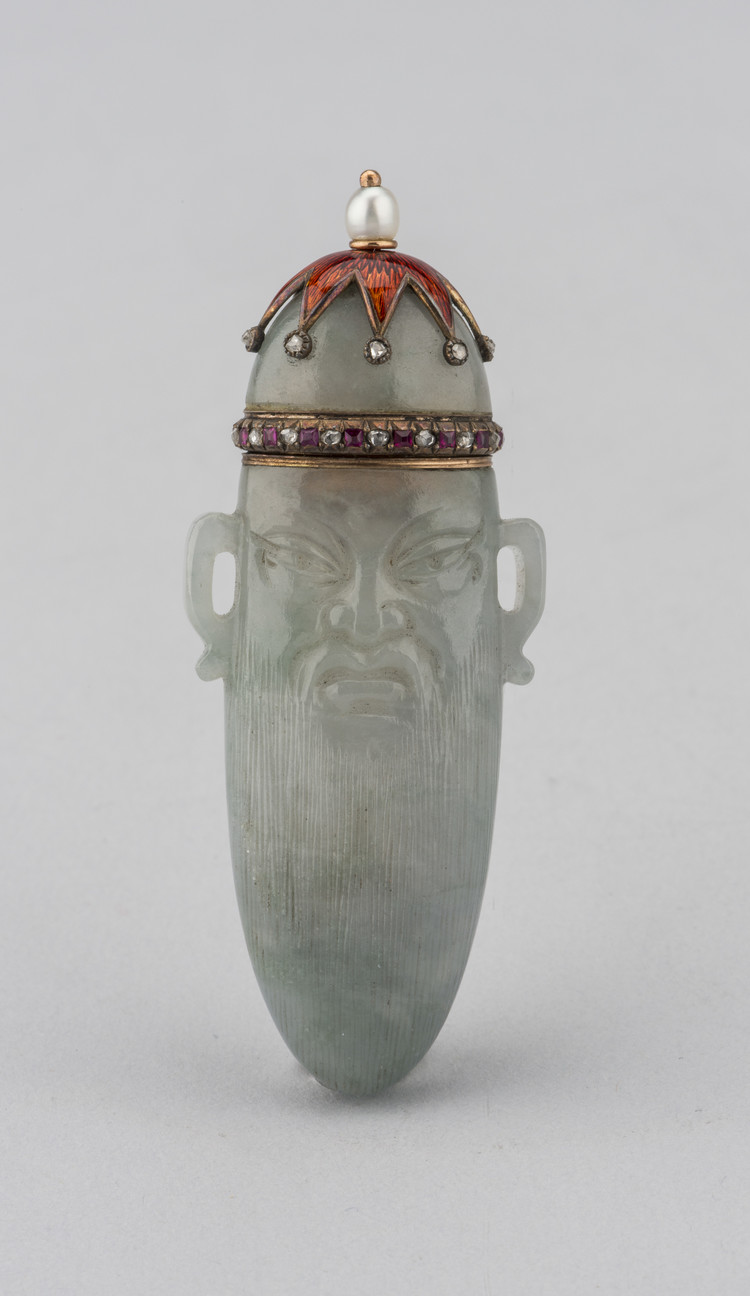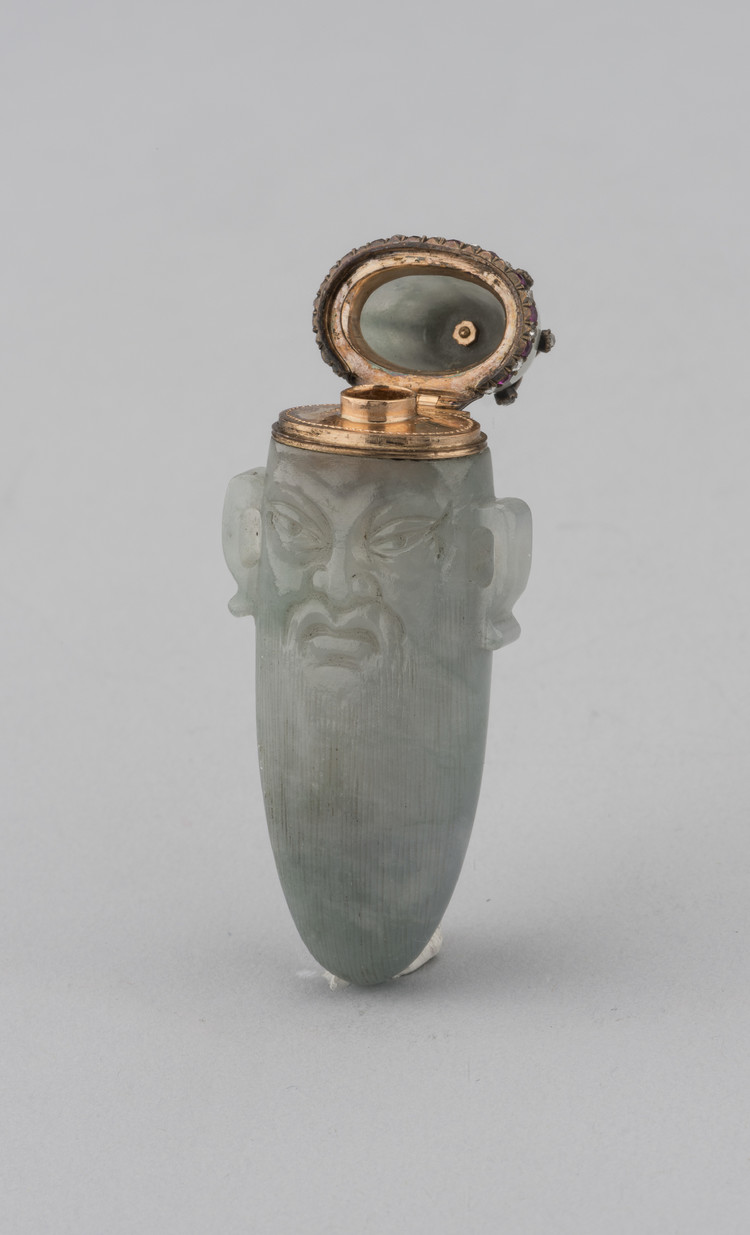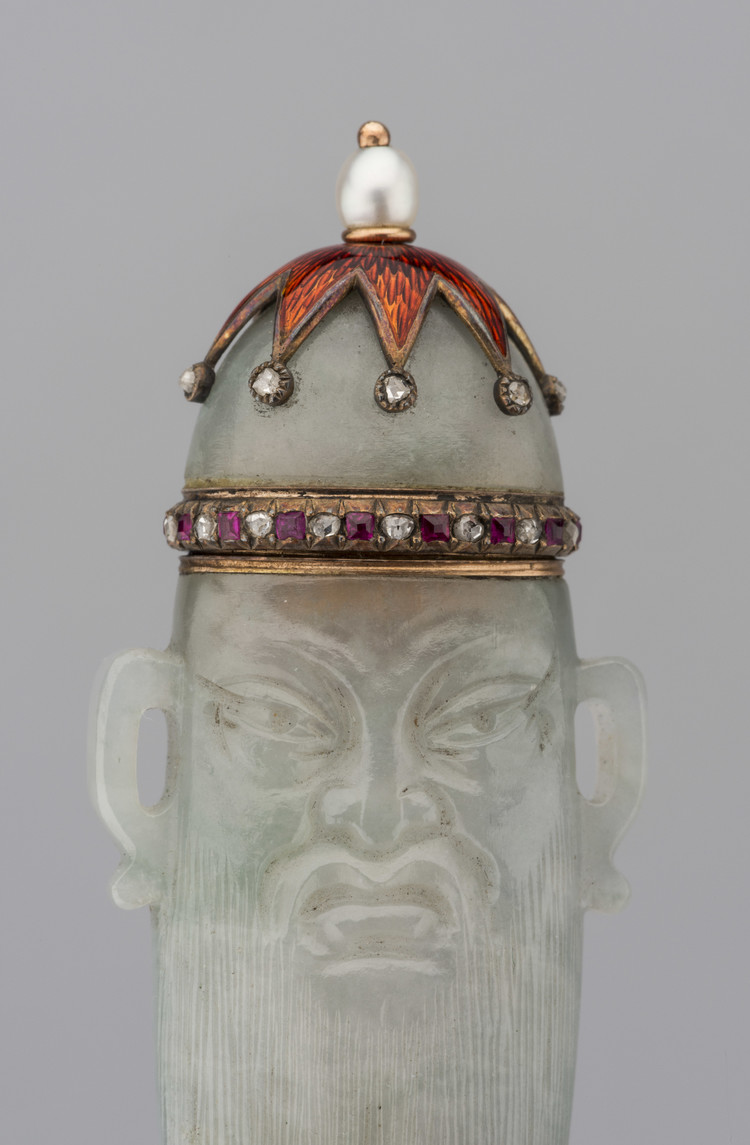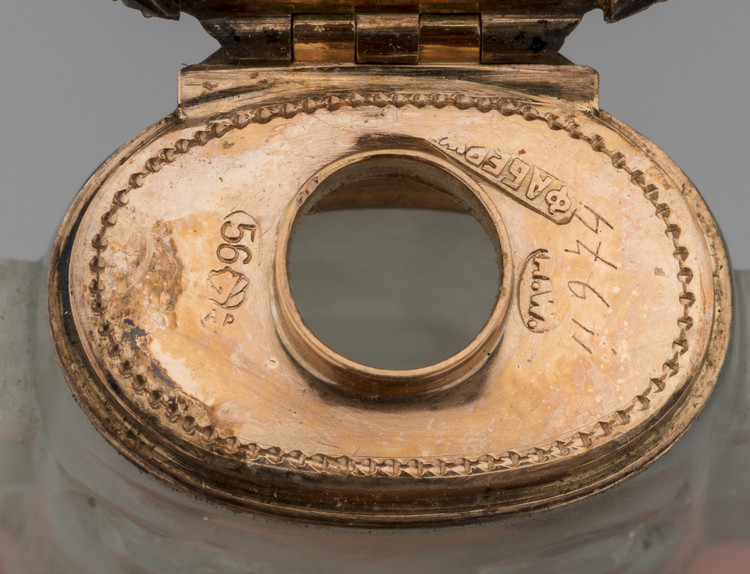The creative output of the House of Fabergé’s artisans was closely linked to the artistic traditions of the Far East and Southeast Asia. This was due to the rise in interest in “exotic” cultures among Europeans at the turn of the 20th century. It found its expression in the introduction of Chinese lapidary techniques and motifs to the Russian lapidary tradition.
Nowhere was this more present than in the creation of works in the “Siamese style” on commission from King Chulalongkorn (1853–1910), or in the gemstone bouquets with Chinese prototypes that the firm’s artisans had become acquainted with.
However, in the first decades of the 20th century the company began producing curious works that didn’t so much illustrate its attempts to apply individual techniques in creating works or giving them a “Chinese look,” but rather confirmed the work put in by the company’s artisans to analyze specific objects made by Chinese lapidaries.
This perfume bottle was carved from jadeite to be shaped like the head of a Chinese man with a long beard. The mineral’s tone is close to that of the light-green nephrite prized in China. The top of the Chinese man’s headwear is made of pearl, while the ends are decorated with “rose” diamonds. The frame and decor were made in the workshop of Henrik Wigström.
There is a very similar bottle in the Royal Collection Trust of the United Kingdom, purchased by Queen consort Alexandra of Denmark at Lady Paget’s charity auction in 1904. It depicted the head of a Taoist and was also made out of jadeite, which speaks to how widespread and popular such objects were.




